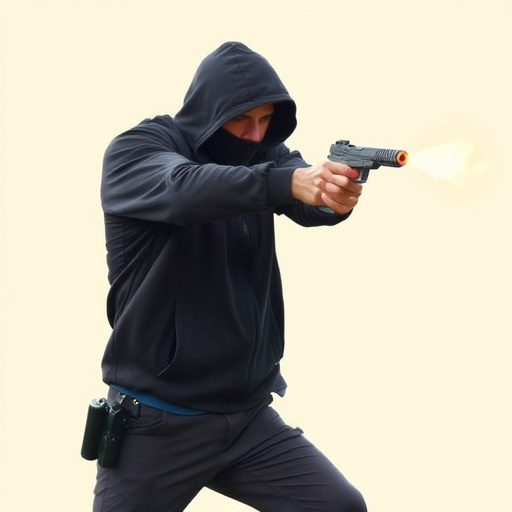Choosing a tactical stun gun with integrated LED flashlight requires understanding stopping power ratings, which indicate its electric current and voltage, crucial for incapacitating attackers. Higher ampere (amperage) ratings provide stronger jolts, while voltage controls shock intensity. Balance these factors with the weapon's design, portability, and personal comfort to select a versatile tool effective in low-light scenarios, suitable for self-defense enthusiasts and law enforcement.
“Uncover the truth behind stun gun stopping power ratings—a crucial aspect of personal safety. This comprehensive guide explores how these devices work and what factors influence their effectiveness. From amp and voltage insights to testing methods, we demystify stun gun performance. Discover tactical considerations for modern stun guns with LED flashlights, offering both light and protection. Learn to choose the perfect self-defense tool tailored to your needs.”
- Understanding Stun Gun Stopping Power Ratings
- Factors Influencing Stun Gun Effectiveness
- The Role of Amp and Voltage in Stun Guns
- Testing Methods for Stopping Power
- Tactical Considerations for Stun Guns with LED Flashlights
- Choosing the Right Stun Gun for Your Needs
Understanding Stun Gun Stopping Power Ratings
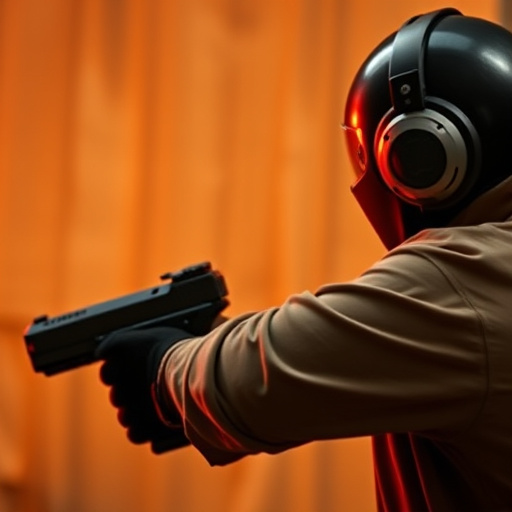
Stun gun stopping power ratings provide crucial insights into the effectiveness of a device designed to incapacitate an attacker. When considering a tactical stun gun with LED flashlight, understanding these ratings becomes essential for personal safety and security. The rating typically measures the electrical current and voltage delivered by the stun gun, indicating its ability to disrupt muscle control and temporarily paralyze an assailant.
These ratings are particularly important as they help users make informed decisions when selecting a stun device. A higher stopping power rating generally corresponds to a more intense shock, which can be beneficial in various scenarios. However, it’s also crucial to balance this with factors like ease of use, portability, and the specific needs of the user, such as personal comfort levels and potential legal considerations surrounding stun gun usage.
Factors Influencing Stun Gun Effectiveness
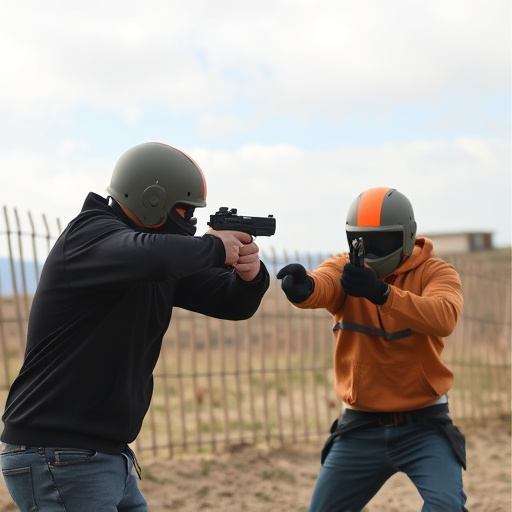
The effectiveness of a stun gun, like a tactical stun gun with LED flashlight, depends on several key factors. One primary consideration is the device’s joule rating, which measures its electrical output and the potential for incapacitation. Higher joule ratings generally translate to more powerful stuns, but it’s not the sole determinant. The size and shape of the stun gun also play a role; smaller, compact designs can be easier to maneuver in tight spaces or during self-defense situations. Additionally, the quality of construction and materials ensures durability, allowing for reliable performance when it matters most.
Another crucial aspect is the stun gun’s contact point and surface area. Effective stun guns deliver a strong electric current through two prongs or electrodes, aiming to disrupt muscle control in the target. The design should ensure consistent and firm contact with the attacker’s body, especially on larger areas like the thigh or chest. Some tactical models incorporate LED flashlights, offering not only illumination but potentially an additional advantage by drawing the assailant’s attention and creating a momentary distraction.
The Role of Amp and Voltage in Stun Guns
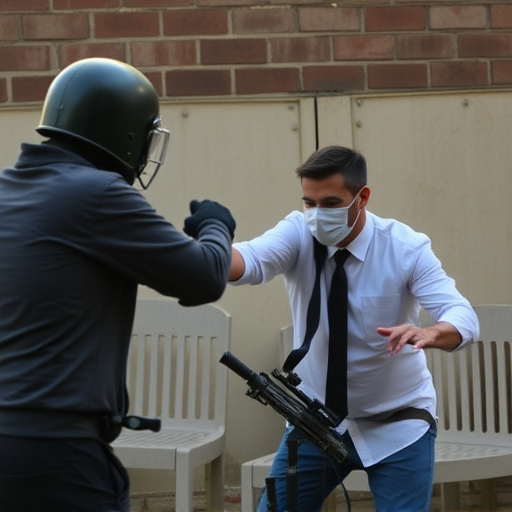
Stun guns, especially tactical models with integrated LED flashlights, are designed to deliver a powerful electric shock for self-defense purposes. The effectiveness of a stun gun largely depends on two key factors: amp (amperage) and voltage. Ampere measures the rate at which electrical charge flows through a circuit, while voltage represents the pressure or force behind the electrical current. A tactical stun gun with LED flashlight combines both these elements to create a formidable defense mechanism.
Higher amp ratings in stun guns generally translate to more powerful shocks, as it indicates the amount of electric current that can flow through the body of the target. Voltage, on the other hand, determines the intensity and duration of the shock. A well-designed tactical stun gun with LED flashlight balances these factors to ensure a strong stopping power while also providing illumination for low-light conditions. This dual functionality makes it a versatile tool for self-defense enthusiasts and law enforcement officers alike.
Testing Methods for Stopping Power
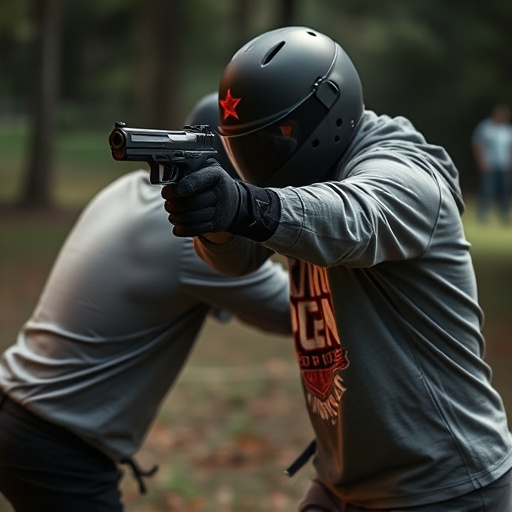
Testing the stopping power of a stun gun, especially a tactical model equipped with an LED flashlight, involves rigorous and standardized procedures to ensure accuracy and reliability. These tests are designed to mimic real-world scenarios, simulating various factors like range, target size, and environmental conditions. One common method is the use of specialized testing ranges where targets, often representing human or animal aggressors, are positioned at different distances. Trained officers then deploy the stun gun, aiming for specific zones to induce incapacitation.
The LED flashlight on a tactical stun gun adds another layer to these tests. Illumination can impact an individual’s ability to defend themselves, so assessing how the light affects both the target’s visibility and their reaction time is crucial. Additionally, some tests evaluate the stun gun’s effectiveness against multiple assailants or in low-light conditions, providing a comprehensive understanding of its stopping power in diverse tactical scenarios.
Tactical Considerations for Stun Guns with LED Flashlights
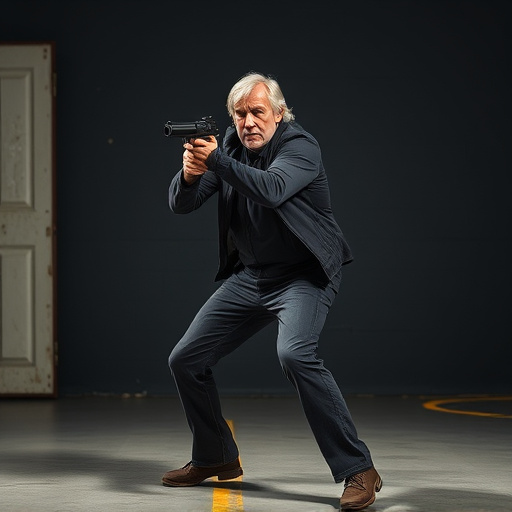
When selecting a stun gun with added functionality, such as an integrated LED flashlight, users must consider the tactical applications. A tactical stun gun with LED flashlight combines the power of a stun device with enhanced visibility, making it a versatile tool for professionals and enthusiasts alike. The light can serve as a crucial element during low-light or nighttime situations, enabling users to assess their surroundings and deploy the stun gun effectively.
These devices often offer various modes, from high-intensity beams for long-range illumination to more focused lights for close-quarters tactical operations. The ability to switch between different light settings and stun levels provides users with a multi-layered approach to self-defense, ensuring they are prepared for diverse scenarios. This combined functionality can be particularly valuable in urban environments or during outdoor pursuits where navigating through darkness or complex landscapes may pose challenges.
Choosing the Right Stun Gun for Your Needs
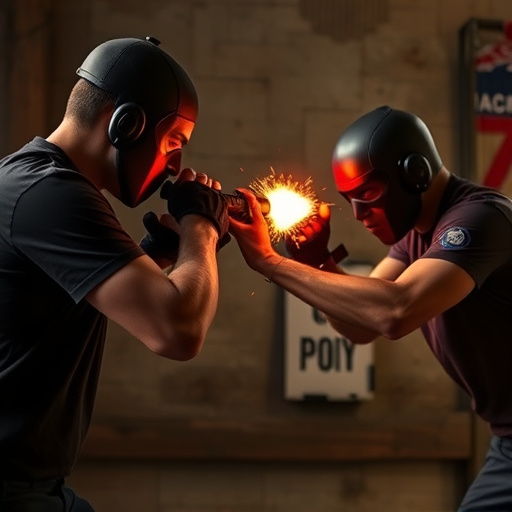
When selecting a stun gun, understanding your specific needs is paramount. Whether you’re prioritizing self-defense in urban areas or require a more versatile tactical tool, there’s a stun gun designed to meet your requirements. For instance, a tactical stun gun with LED flashlight combines functionality and power, ideal for low-light situations or as an additional defense mechanism in unfamiliar environments.
Features like durability, shock strength, and ease of use play significant roles in your decision. Higher stopping power ratings indicate devices capable of neutralizing threats faster and more effectively. Consider also the range and delivery mechanisms; some stun guns offer longer ranges, while others focus on direct contact for maximum impact. Choose wisely based on your potential scenarios to ensure you’re prepared with a reliable and effective stun gun.
When selecting a tactical stun gun with an integrated LED flashlight, understanding stopping power ratings is paramount. By grasping how factors like amp and voltage, testing methods, and tactical considerations impact effectiveness, you can make an informed choice to suit your specific needs. Remember, the right stun gun combines powerful performance with reliable functionality for maximum safety and security.
